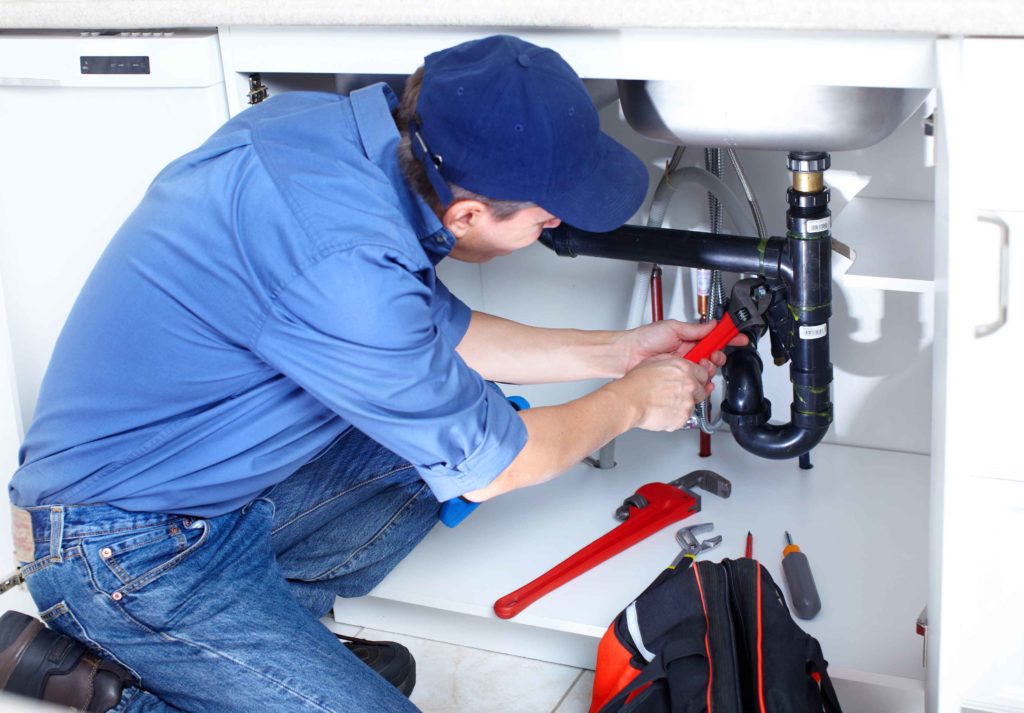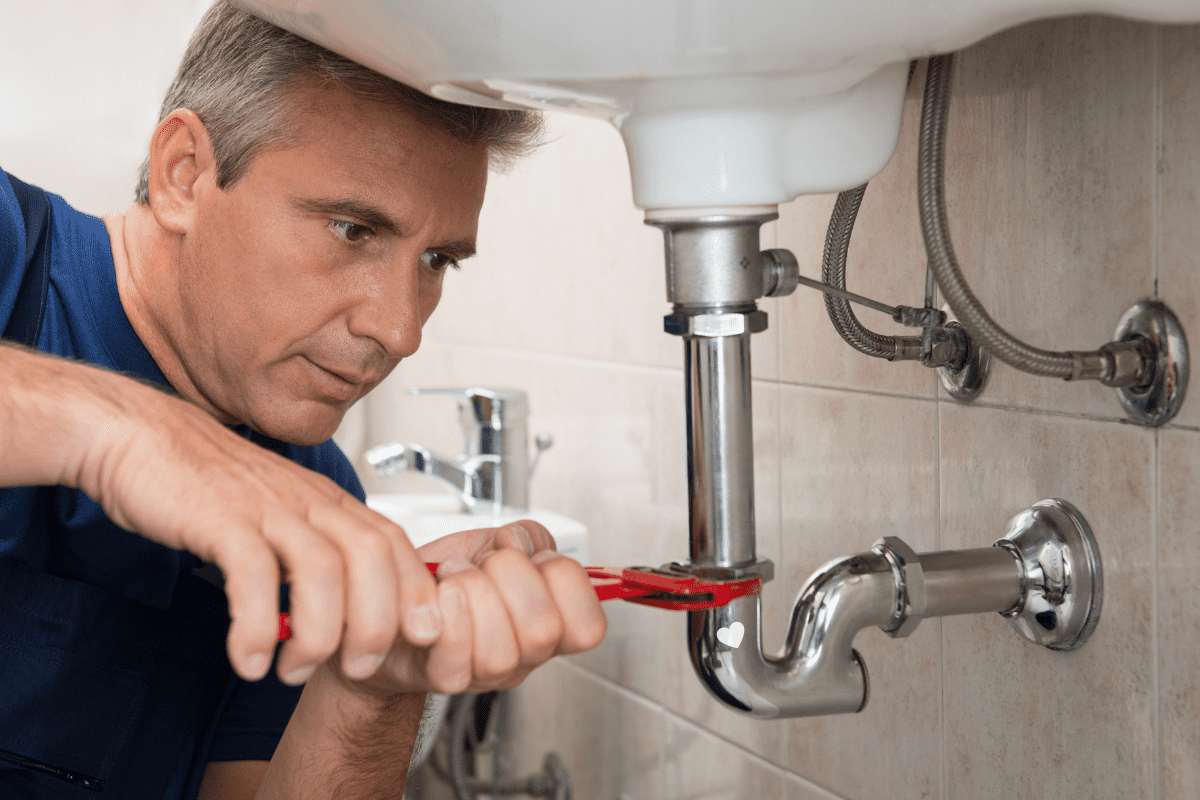Plumbing issues can strike at any time. They often need immediate attention.
Imagine coming home to find a burst pipe or clogged drain. Panic sets in. What do you do next? This is where knowing about emergency plumbing fixes becomes vital. Quick action can prevent further damage and save money. In this blog, we will guide you through simple, effective steps to handle common plumbing emergencies.
Whether it’s a leaky faucet or an overflowing toilet, you will learn practical solutions. Stay calm and follow our tips to tackle these problems head-on. Don’t let a plumbing issue ruin your day. Read on to become prepared for any plumbing emergency.

Credit: millwoodplumbing.net
Identifying Plumbing Emergencies
Plumbing problems can be a real headache, especially when they escalate into emergencies. But how do you know when a plumbing issue is an emergency? Identifying plumbing emergencies quickly can save you a lot of trouble and money. Let’s break it down with some simple signs and potential risks to keep an eye on.
Common Signs
Spotting a plumbing emergency can be tricky, but there are a few tell-tale signs:
- Water Leaks: If you see water pooling around your home or notice damp spots on walls or ceilings, you might have a leak.
- Blocked Drains: Water that drains slowly or not at all can indicate a blockage. If multiple drains are affected, it could be a serious problem.
- Low Water Pressure: A sudden drop in water pressure can mean a pipe is leaking or blocked.
- No Hot Water: If you’re left with cold showers, your water heater might be failing.
Potential Risks
Ignoring plumbing emergencies can lead to severe damage. Here’s what can happen:
- Water Damage: Leaks can damage walls, floors, and furniture. Mold can also develop, which is bad for your health.
- Structural Damage: Water can weaken the structure of your home, leading to costly repairs.
- Health Hazards: Blocked drains can cause sewage backups, which are not only unpleasant but also dangerous.
- High Water Bills: Leaking pipes can waste a lot of water, leading to higher bills.
Knowing these signs and risks can help you act quickly. A little knowledge goes a long way in preventing a small problem from becoming a big disaster. So, next time you notice a plumbing issue, ask yourself, “Is this an emergency?” If in doubt, it’s always better to be safe than sorry. Call a professional plumber and save yourself the trouble.
Remember, a stitch in time saves nine. Stay vigilant and keep your plumbing in check!
Essential Tools For Quick Fixes
Dealing with a plumbing emergency can be stressful. Having the right tools can save you time and money. This section covers the essential tools for quick plumbing fixes.
Basic Toolkit
A basic toolkit is crucial for any homeowner. It includes a few simple tools for common plumbing issues.
A plunger is the first tool you need. It helps clear blockages in toilets and sinks. A pipe wrench is also essential. It is used to tighten or loosen pipes.
Pliers are handy for gripping and turning. Use them to remove nuts and bolts. Teflon tape is another must-have. It helps seal threaded pipe connections.
Keep a bucket nearby. It helps catch water spills during repairs. A flashlight is useful. It helps you see in dark or tight spaces.
Advanced Equipment
Some plumbing problems need advanced equipment. These tools are for more complex repairs.
A drain snake, or auger, can clear tough clogs. It reaches deep into pipes to remove blockages. A pipe cutter is useful for cutting pipes to the right length.
A basin wrench is designed for hard-to-reach places. It helps tighten or loosen nuts under sinks. A propane torch is needed for soldering copper pipes. It creates a strong, leak-proof seal.
A pressure gauge is important. It helps monitor water pressure in your system. This prevents future leaks or bursts.
With these tools, you can handle many emergency plumbing fixes yourself. Stay prepared and keep your home safe.
Handling Burst Pipes
Dealing with burst pipes can be stressful. Water can damage your home quickly. Knowing what to do can save you time and money. Here are some steps to handle burst pipes effectively.
Immediate Actions
First, turn off the main water supply. This will stop more water from entering your home. Then, open all faucets. This helps drain the remaining water in the pipes. Next, turn off the electricity in the affected area. Water and electricity are a dangerous mix. Finally, move furniture and belongings out of the way. Protect your valuables from water damage.
Temporary Solutions
Use tape to seal small leaks temporarily. Duct tape or pipe tape can work well. Wrap the tape around the crack or hole. For larger leaks, use a pipe clamp. Tighten the clamp around the damaged area. This will help reduce water flow. If you have a patch kit, apply it according to the instructions. These kits can provide a temporary fix.

Credit: johnsservice.net
Dealing With Clogged Drains
Clogged drains are a common household problem. They can cause a lot of frustration and inconvenience. Imagine you’re about to take a shower, and the water doesn’t drain. Or, you have a sink full of dirty dishes, and the water just sits there. Annoying, right? But don’t worry, there are ways to fix this. Let’s dive into some effective methods to handle clogged drains.
Diy Methods
If you like to do things yourself, you’re in luck. There are several easy methods to unclog drains without calling a plumber. Let’s look at some of them:
- Boiling Water: Sometimes, all you need is hot water. Boil a kettle and pour the water slowly down the drain. This can dissolve soap scum, grease, and other blockages.
- Baking Soda and Vinegar: This is a classic. Pour half a cup of baking soda down the drain, followed by half a cup of vinegar. Cover the drain and wait for about 15 minutes. Then, rinse with hot water. This combination can break down many types of clogs.
- Plunger: A plunger isn’t just for toilets. It can work on sinks and tubs too. Place the plunger over the drain and pump it up and down to loosen the clog.
When To Call A Professional
Sometimes, DIY methods just aren’t enough. If you’ve tried everything and the drain is still clogged, it might be time to call a professional plumber. Here are some signs that you need expert help:
- Persistent Clogs: If the drain keeps clogging, even after you’ve cleared it, there could be a deeper issue that needs professional attention.
- Multiple Clogged Drains: If more than one drain is clogged at the same time, there could be a problem with your main sewer line. This is a serious issue that needs a plumber.
- Strange Noises or Smells: If you hear gurgling sounds or notice a foul smell coming from your drains, it’s time to call a pro. These signs indicate a bigger problem that needs to be fixed right away.
Remember, it’s always better to be safe than sorry. If you’re unsure about the cause of the clog or how to fix it, don’t hesitate to reach out to a professional. They have the tools and expertise to get your drains running smoothly again.
Fixing Leaky Faucets
Fixing leaky faucets quickly prevents water damage. Emergency plumbing fix services ensure your home stays dry and safe. Get help fast to avoid costly repairs.
Leaky faucets can cause significant water wastage. This can lead to higher water bills. Fixing them promptly is essential. You can handle minor fixes yourself. For complex issues, call a professional.Quick Fixes
First, turn off the water supply. This prevents any mess. Next, use a wrench to remove the faucet handle. Check for worn-out washers. Replace them if needed. Reassemble the faucet and turn the water back on. Test for leaks. If the problem persists, it might need a deeper inspection.Preventive Measures
Regular maintenance can prevent leaks. Check your faucets monthly. Tighten any loose parts. Avoid using too much force when turning off the tap. This keeps the washers in good condition. Clean the aerator to ensure smooth water flow. This helps in avoiding leaks caused by blockages. Consider installing quality faucets. They last longer and need fewer repairs. “`Addressing Water Heater Issues
Water heaters are essential for our daily comfort, providing hot water for showers, cleaning, and cooking. However, when they malfunction, it can be more than just a minor inconvenience. Dealing with a broken water heater can be frustrating, but with the right knowledge, you can address many common issues quickly and safely. Let’s dive into some of the typical problems you might encounter and how to handle them.
Common Problems
Water heaters, like any other household appliance, can develop various issues over time. Here are some of the most frequent problems:
- No Hot Water: This is often due to a malfunctioning thermostat or heating element.
- Leaking Water: Leaks can occur due to corrosion or a faulty valve.
- Strange Noises: Banging or popping sounds usually indicate sediment build-up at the bottom of the tank.
- Discolored Water: Rusty or muddy water can suggest corrosion inside the tank.
- Foul Smells: Bad odors often mean bacteria growing in the tank.
Safety Precautions
Before you start fixing any water heater issues, it’s crucial to take some safety steps to prevent accidents:
- Turn Off Power: If you have an electric water heater, switch off the power at the circuit breaker. For gas heaters, turn off the gas supply.
- Shut Off Water Supply: Close the cold water inlet valve to stop water from entering the tank.
- Let the Tank Cool: Hot water and steam can cause severe burns. Give the tank time to cool down before working on it.
- Use Protective Gear: Wear gloves and safety goggles to protect yourself from hot water and debris.
By following these precautions, you can safely tackle many water heater problems. Remember, if you’re unsure or uncomfortable with any repair, it’s always best to call a professional plumber. Better safe than sorry, right?
Addressing water heater issues might seem daunting, but with a bit of patience and the right approach, you can often resolve the problem without too much hassle. And who knows? You might even learn a thing or two about how your home works!
Managing Sewer Backups
Dealing with a sewer backup can be a homeowner’s worst nightmare. The mess, the smell, and the potential damage can be overwhelming. But fear not! With the right knowledge and quick action, you can minimize the impact. Let’s dive into how you can manage sewer backups effectively.
Initial Steps
When you first notice a sewer backup, it’s essential to act quickly. Here are the initial steps you should take:
- Stop Using Water: Immediately stop using any water in your home. This includes toilets, sinks, showers, and appliances.
- Turn Off Power: If water has reached electrical outlets, turn off the power to avoid any risk of electrocution.
- Identify the Source: Check if the backup is localized to a single drain or affecting multiple drains. This can help you determine the extent of the problem.
- Protect Your Belongings: Move any valuables or furniture away from the affected area to prevent damage.
Long-term Solutions
After handling the immediate situation, it’s crucial to think about long-term solutions to prevent future backups. Here are some effective strategies:
- Regular Maintenance: Schedule regular inspections and maintenance with a professional plumber. This can help identify potential issues before they become major problems.
- Install a Backwater Valve: A backwater valve can prevent sewage from backing up into your home during heavy rainfall or sewer system overloads.
- Upgrade Your Plumbing: If you live in an older home, consider upgrading your plumbing system. Modern pipes and fixtures are less prone to blockages and backups.
- Proper Waste Disposal: Be mindful of what you flush down the toilet or pour down the sink. Avoid disposing of grease, wipes, or other non-biodegradable items in your plumbing system.
Remember, dealing with sewer backups doesn’t have to be a disaster. With these tips and a proactive approach, you can keep your home safe and clean. Have you ever faced a sewer backup? How did you handle it? Share your stories in the comments below!
Preventive Maintenance Tips
Keeping your plumbing system in good shape can save you from costly repairs. Regular maintenance helps spot issues early. This guide will share practical tips for maintaining your plumbing. Follow these steps to ensure your system runs smoothly all year round.
Regular Inspections
Regular inspections are crucial to catch small issues before they become big problems. Check for leaks in pipes under sinks and in basements. Look for any signs of moisture or mold. Inspect faucets and showerheads for drips. A small drip can waste a lot of water over time. Ensure your toilets flush properly and do not run continuously. A running toilet can increase your water bill significantly.
Seasonal Checks
Seasonal checks help prepare your plumbing for changing weather. In the spring, check outdoor faucets for damage from winter. Ensure hoses are in good condition. In the fall, disconnect outdoor hoses to prevent freezing pipes. Insulate exposed pipes in colder months to avoid bursts. Check your water heater in the winter to ensure it is working efficiently. Adjust the temperature if needed to save energy.
By following these simple preventive maintenance tips, you can avoid emergency plumbing issues. Regular inspections and seasonal checks will keep your plumbing system in top condition. Start today and enjoy peace of mind knowing your home is protected.

Credit: morningsideplumbing.com
Frequently Asked Questions
What Is Considered A Plumbing Emergency?
A plumbing emergency includes burst pipes, severe leaks, backed-up sewage, gas leaks, and no water supply. Immediate attention is crucial.
How Much Does An Emergency Plumber Cost?
Emergency plumber costs vary. Typically, you can expect to pay between $100 and $500 per hour, depending on the job complexity and location. Always ask for a detailed estimate before any work begins.
Is Plumbing A Maintenance Emergency?
Yes, plumbing can be a maintenance emergency. Burst pipes, severe leaks, or clogged drains require immediate attention to prevent damage.
How Do You Pay For Emergency Plumbing?
Pay for emergency plumbing using credit cards, cash, or financing options offered by some plumbing services. Check for discounts.
Conclusion
Facing a plumbing emergency can be stressful. Quick action is crucial. Keep essential tools handy. Know basic fixes like stopping leaks. Call a professional plumber for major issues. Regular maintenance prevents future problems. Stay prepared to handle plumbing emergencies efficiently.
Your home will stay safe and water damage-free.

